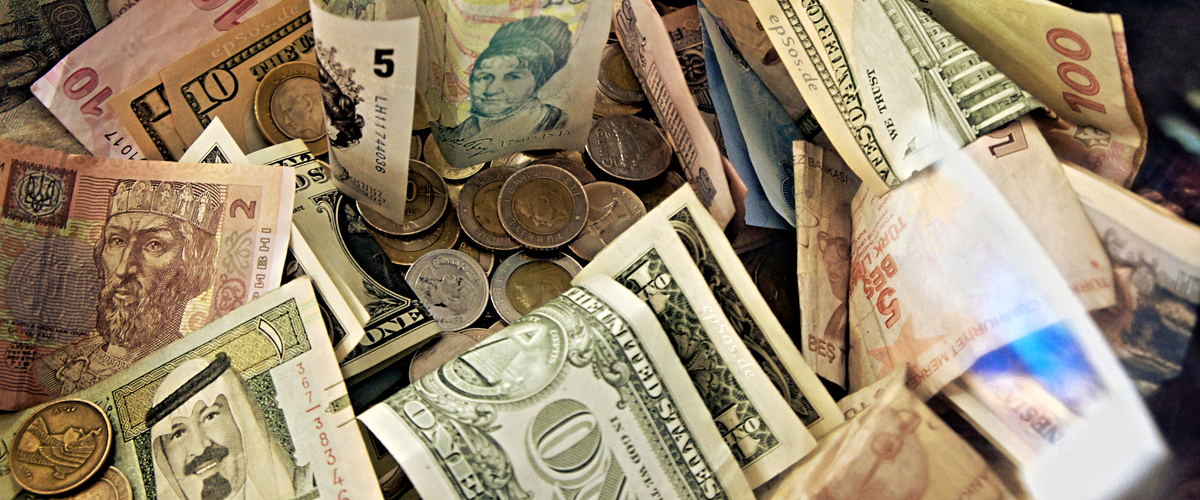Photo CC by epSos.de on Flickr
Economics vs. Art: Why a good fit has never existed
The economics of art is a perennial source of debate. Proponents of funding for the arts usually follow one of two arguments. The first is that art contributes intangibly to society by contributing a reason to live, as opposed to a way to live. The second is that art actually contributes tangibly to the greater economy through the hard work that many artists do for relatively little pay. In contrast, those who oppose funding for the arts argue that funding is waste of money, because valuable art will be able to survive economically on its own anyway: good artists will be in high demand, creating scarcity for their work, and hence ensuring them a commensurate level of income.
But art has never been a good fit to any monetary economy, because money was not really designed to handle art. Money, and our current economic system, was designed to handle finite commodities that can be traded. This is when classical economic theories show some semblance to reality. These same economic theories fall short, however, in correctly measuring other kinds of real value, not just in the arts, but in all areas of human activity, because many of the important things that we do cannot really be measured in monetary value. And when we do try to measure these things in a monetary way, it often causes new issues (e.g., giving away sex vs. charging for it).
A recent episode of the TV series House reminded me of this fact. A doctor wanted to know why he was being paid less than the other experts on his team when he had the same qualifications and was as useful to the team. His boss said, “Come on, you know salary isn’t based on what you’re worth, it’s based on what you can negotiate.” Because he had no competing offers of employment, he was being paid less.
Creative artists (as opposed to interpretive artists) fall into the same pit trap. A composer is always disposable, because his or her labour can always be replaced with someone else’s. Sure, a particular composer might have a profound artistic message to share that would touch a lot of peoples’ lives. But there are always hundreds of other composers with a good, if not life-shatteringly profound, message to share. Some of them will be young composers who have never had any professional opportunities to speak of and would jump at the chance to gain experience. But once they have this experience, they haven’t gained any bargaining power, because they never have real “competing offers” and there is always someone new who is ready for the next “opportunity” to work for free.
The situation is different for visual artists, because they create objects that can be sold. A painting can be treated like any other rare object and fits in perfectly with traditional economic theories: if there is only one original, then it commands value if many people want it. But for a composer or a dancer or a singer, the original does not exist: dance and sound are intangibles that can’t be held in one’s hands. True, there are some superstar performers who can turn their very presence into a rare commodity to be sold, but this doesn’t help composers or choreographers or playwrights or filmmakers—or any other artist whose work is intangible and realized through other people’s efforts (through interpretation, in other words).
This problem, to my mind, invalidates the argument that good artists will be able to survive on the merits of their work. The creative artists—the ones who come up with the vision for the art in the first place—almost all work in the intangible realm, and their work falls between the cracks of our economic system. It cannot be assigned value and hence it is assigned a default value of zero, despite the fact that we instinctively know this to be an untrue valuation. Our society avoids the issue by giving other (often menial) jobs to people who work with intangibles: Composers, your job is to get students to enroll in a university music program; singer-songwriters, your job is to perform in such a way that you can sell a lot of t-shirts. Nobody actually tries to assign value to the intangible work that makes the person valuable in the first place (i.e. creating music).
To complicate this issue, our economic system also rewards instant gratification and the production of goods that can serve the most people at the least cost, regardless of quality. The system doesn’t do a good job of distinguishing value from monetary worth, and neither do most people in the system (the “consumers”), because they have been trained to make short-term decisions based on price alone. The classic example of how this type of economics works out is the obesity epidemic. People eat a lot of fast food because it tastes good (at least in the few seconds after it enters your mouth), it’s cheap, and it’s readily accessible. Sometimes it’s the only option, as a result of monopolistic pressures on the part of the fast-food industry. But we have come to a general consensus that it is not healthy and it costs us dearly on the long run, both in terms of health and our wallets.
Therefore, in the cases where the arts do provide tangible products for sale (paintings, sound recordings, DVDs, etc), the market does a poor job of judging their value. Successful artistic “products” are those that replicate the McDonald’s phenomenon in their respective disciplines. They tend to be disposable, quickly forgotten, and easily replaceable. They become fillers or background to our lives, as opposed to adding to them. And this is a truth that is as applicable in the high-art realm as in the popular one.
Before modern media, people were much more receptive to art in general because they rarely experienced any of it. Today, they still rarely experience any of it, but they do experience a replica of art, equivalent to how fast food is a replica of real food, and which is similarly designed to take their money without providing any long-term value. So it’s no surprise that there is antagonism against supporting the arts: the economic framework of our everyday lives can’t evaluate it, and what does get presented to us as art too often is only artistic replica.
This is hardly a justification to stop supporting the arts, however. Lest we forget, there is hardly an industry in the Western world today that does not rely on subsidies to survive. Real, open, free capitalism is just too brutal. There is a strong hypocrisy in claiming that the largest banks and auto manufacturers in the world might somehow need subsidies to survive (despite public disapproval) but that the arts should be self-sufficient. No human activity, economic or otherwise, is really self-sufficient, and we should be especially sensitive to those that are poorly served by the reigning economic theories. We need to remember that these are only theories, not truths. And perhaps a wake-up call in this respect will end up being the most lasting legacy of the 2008 credit crunch. Art has never been a good fit for economic theory, but that doesn’t mean it has no value. After all, it’s been around longer than history and refuses to die despite our neglect, so art must be something pretty important to humans on a fundamental, biological level. The only question is do we want to allow as many people to access real art as possible, or allow it to get buried under a mountain of replica?



